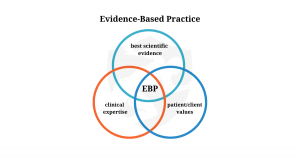The Brookbush Institute Publishes a NEW Glossary Term: 'Evidence-based Practice'
The Brookbush Institute continues to enhance education with new courses, a modern glossary, an AI Tutor, and a client program generator.
The Brookbush Institute has contributed to the advancement of EBP by establishing the first comprehensively evidence-based education platform in the rehabilitation & human performance industry.”
NEW YORK, NY, UNITED STATES, August 14, 2025 /EINPresswire.com/ -- - Excerpt from Glossary Term: Evidence-based Practice— Dr. Brent Brookbush, CEO of Brookbush Institute
- Related Article: Meta-analysis Problems: Why do so many imply that nothing works?
- Related Certification: Human Movement Specialist (HMS)
DEFINITION:
Evidence-based practice (EBP) is a systematic approach to decision-making that integrates the best available research evidence, clinical expertise, and patient values and preferences to optimize outcomes in health care, rehabilitation, and related fields. EBP aims to apply scientific knowledge in a practical, individualized manner, improving the quality of care and resource allocation.
KEY COMPONENTS
- Best Available Evidence – High-quality, relevant research findings, often drawn from peer-reviewed studies, systematic reviews, or clinical guidelines.
- Clinical Expertise – The skills and experience of practitioners, including their ability to interpret research evidence and apply it to specific patient contexts.
- Patient Values and Preferences – Consideration of individual goals, cultural backgrounds, expectations, and personal choices.
SEMANTIC AND CONTEMPORARY USE:
The terms "evidence-based medicine" and “evidence-based practice” are often used interchangeably, although the latter is more widely used by professionals who are not physicians. Sometimes “evidence-informed practice” is used, with the latter placing greater emphasis on blending evidence with contextual knowledge and professional reasoning.
FREQUENTLY ASKED QUESTIONS (FAQs)
What are the 4 parts of Evidence-Based Practice?
- The four commonly recognized components of EBP are: (1) best available evidence, (2) clinical expertise, (3) patient/client values and preferences, and (4) the clinical environment or context in which care is delivered.
What are the 5 steps in Evidence-Based Practice?
- The classic five-step process includes: (1) ask an answerable clinical question, (2) acquire the best evidence, (3) appraise the evidence for validity and relevance, (4) apply the evidence to practice, and (5) assess or evaluate the outcomes of that application.
How is EBP different from following clinical guidelines?...
FOR THE FULL TEXT AND SO MUCH MORE, CLICK ON THE LINK
Brent Brookbush
Brookbush Institute
Support@BrookbushInstitute.com
Visit us on social media:
LinkedIn
Instagram
Facebook
YouTube
TikTok
X
Other
Legal Disclaimer:
EIN Presswire provides this news content "as is" without warranty of any kind. We do not accept any responsibility or liability for the accuracy, content, images, videos, licenses, completeness, legality, or reliability of the information contained in this article. If you have any complaints or copyright issues related to this article, kindly contact the author above.

